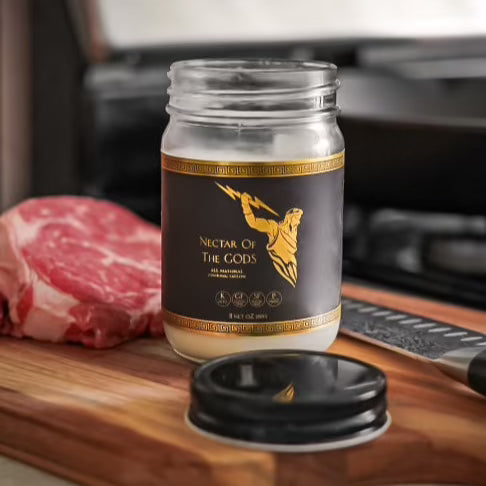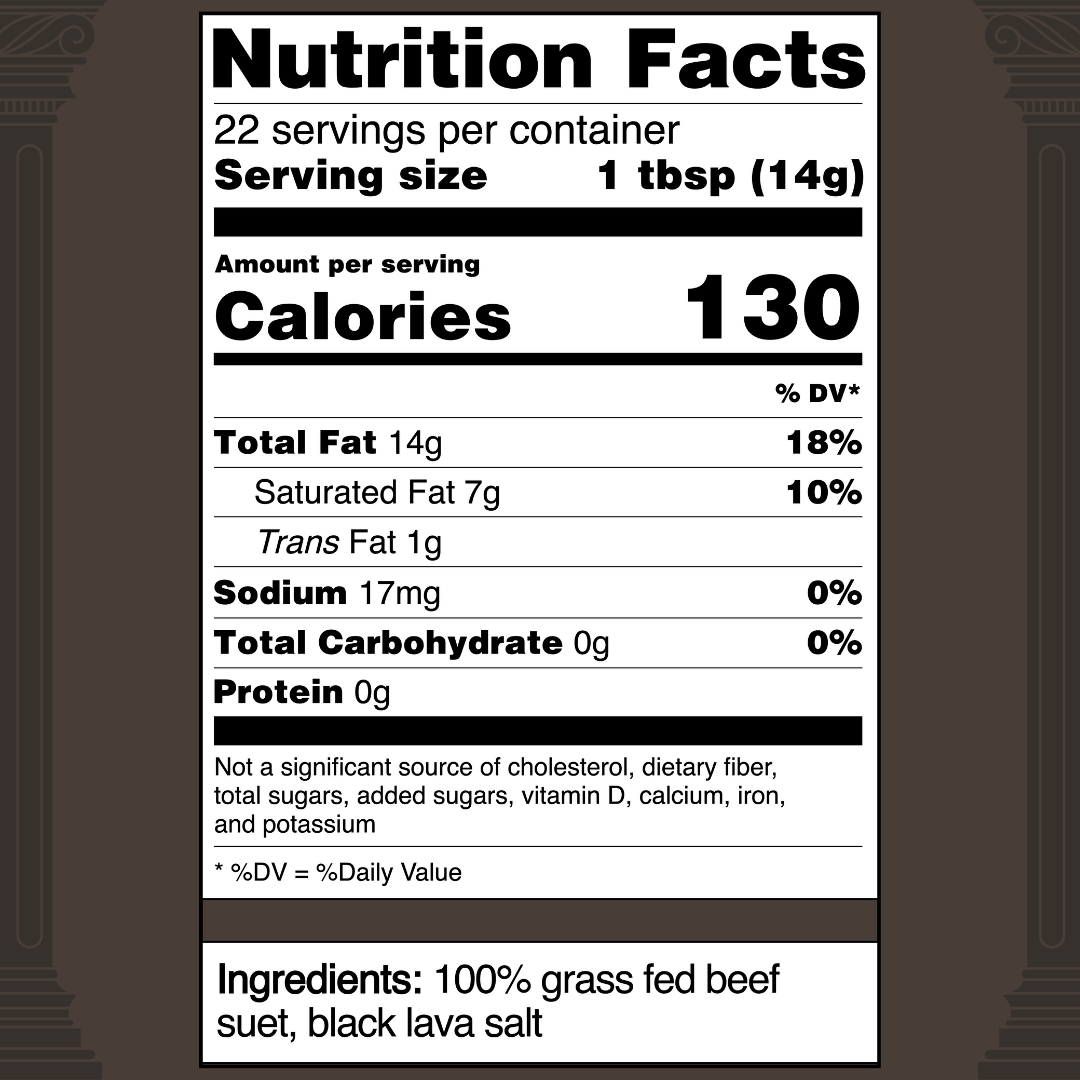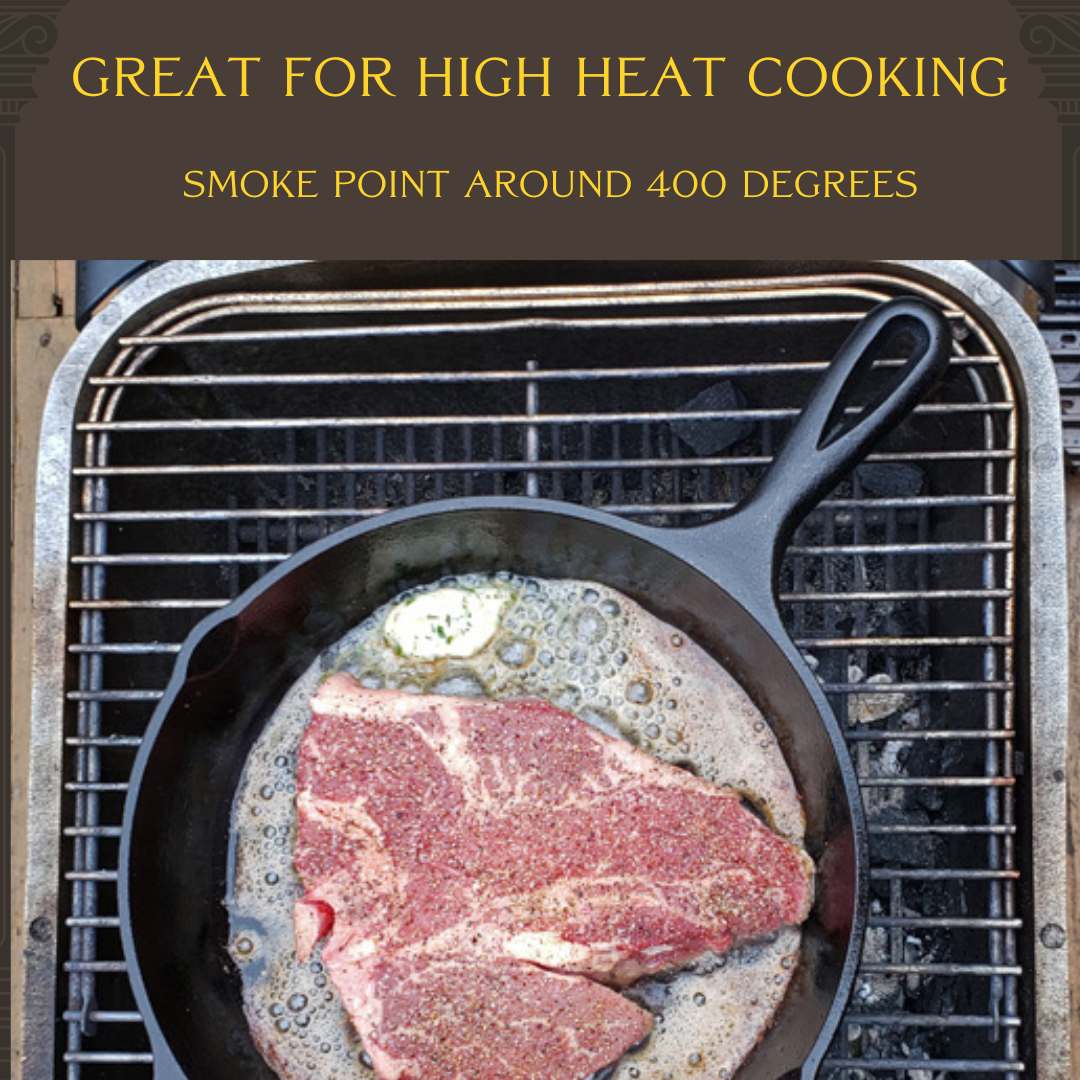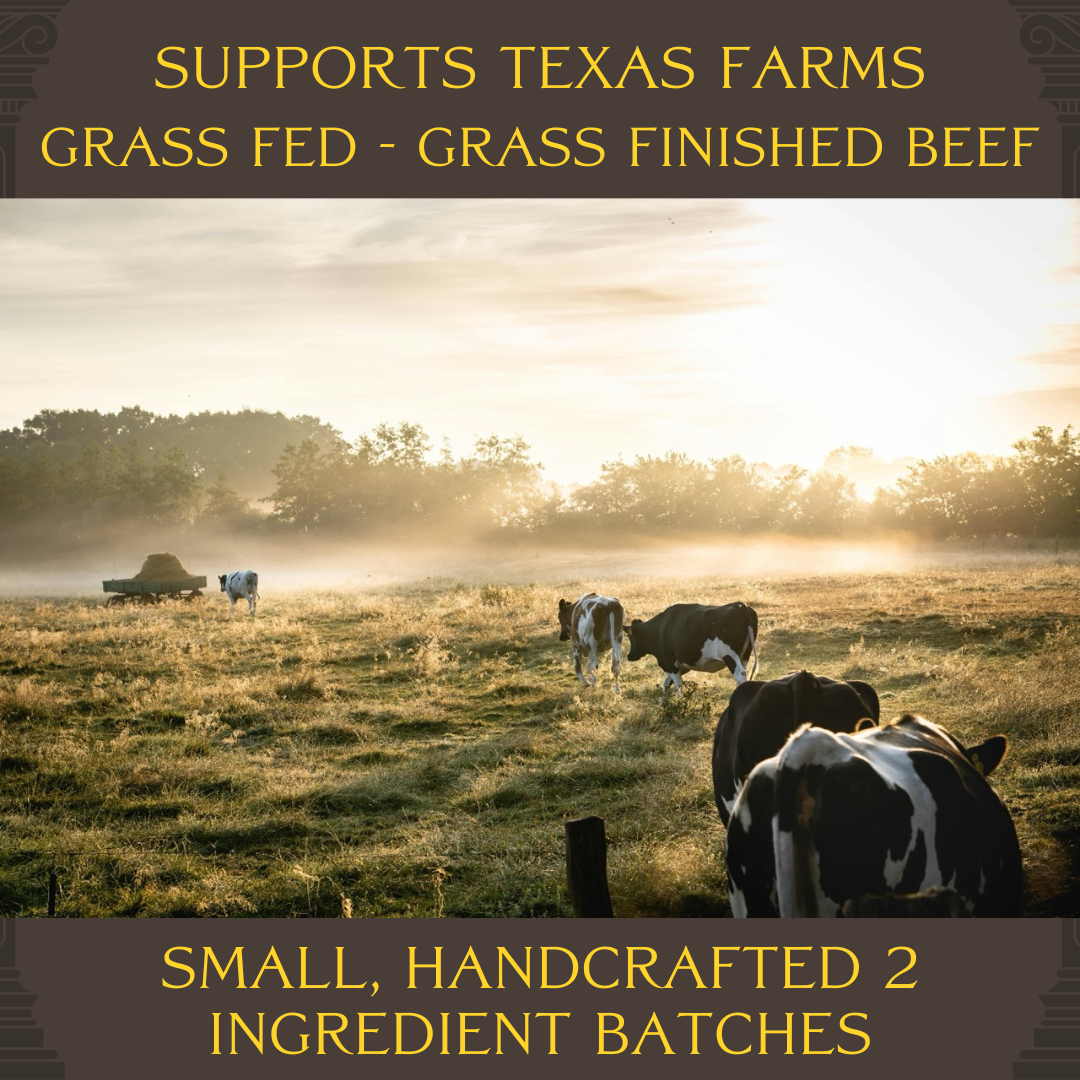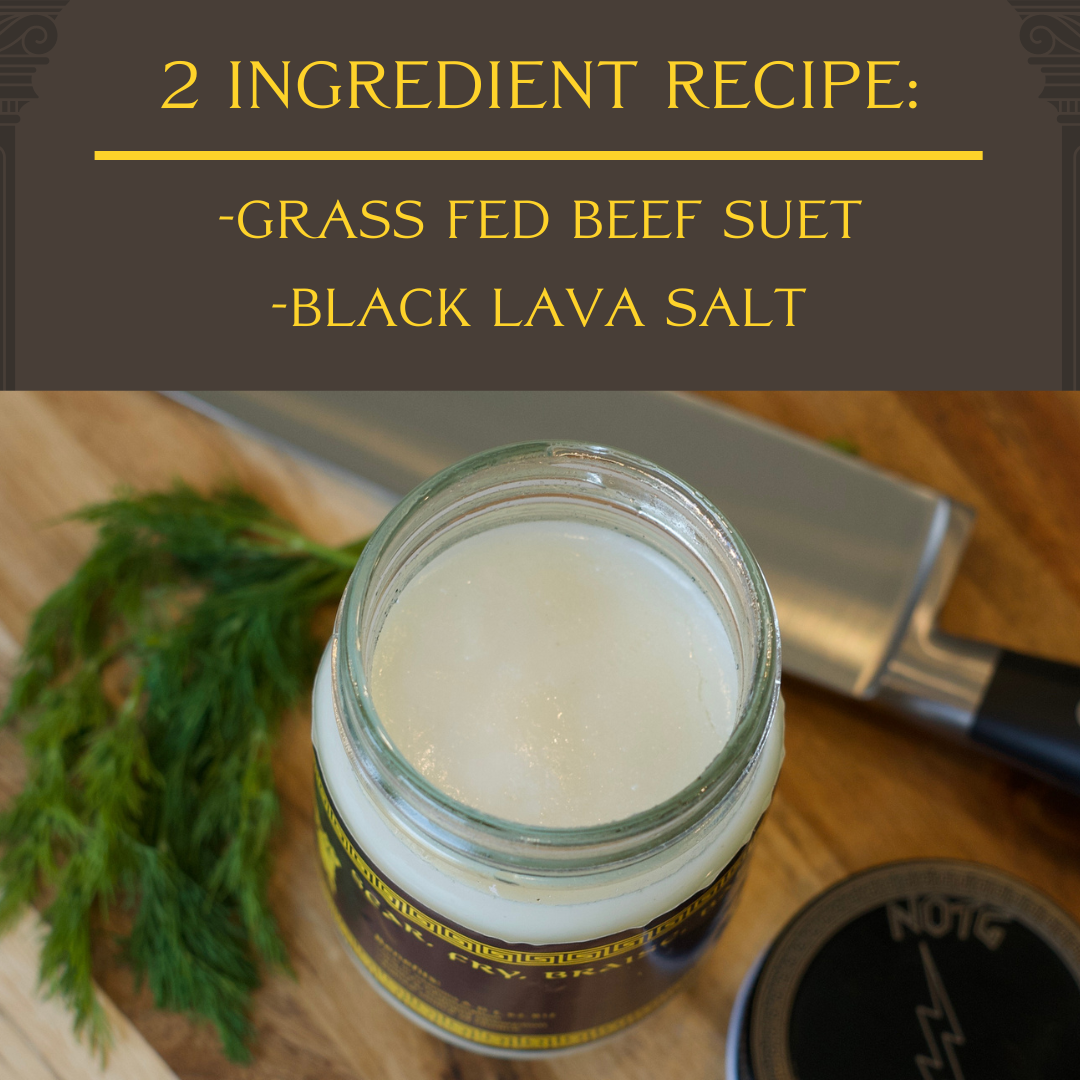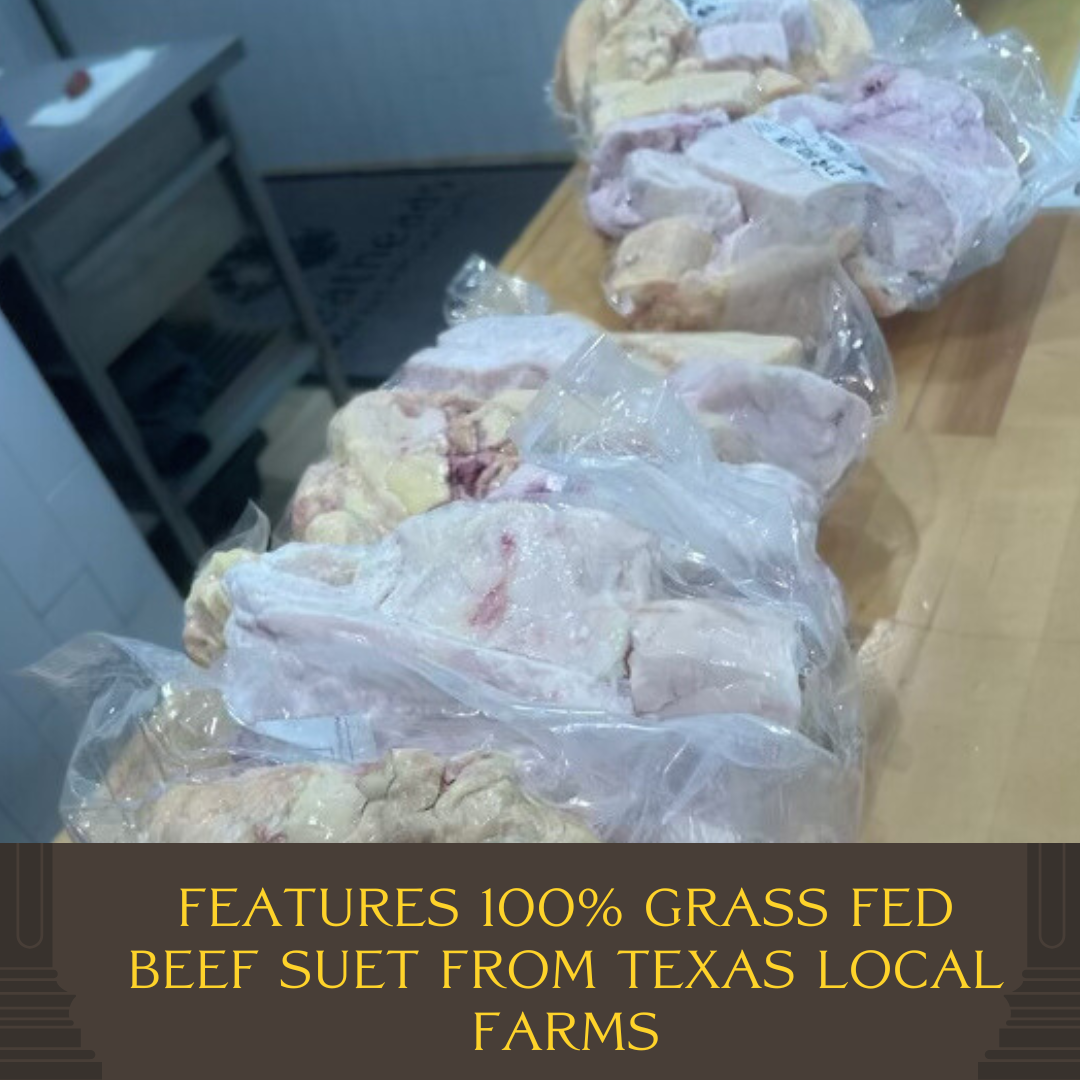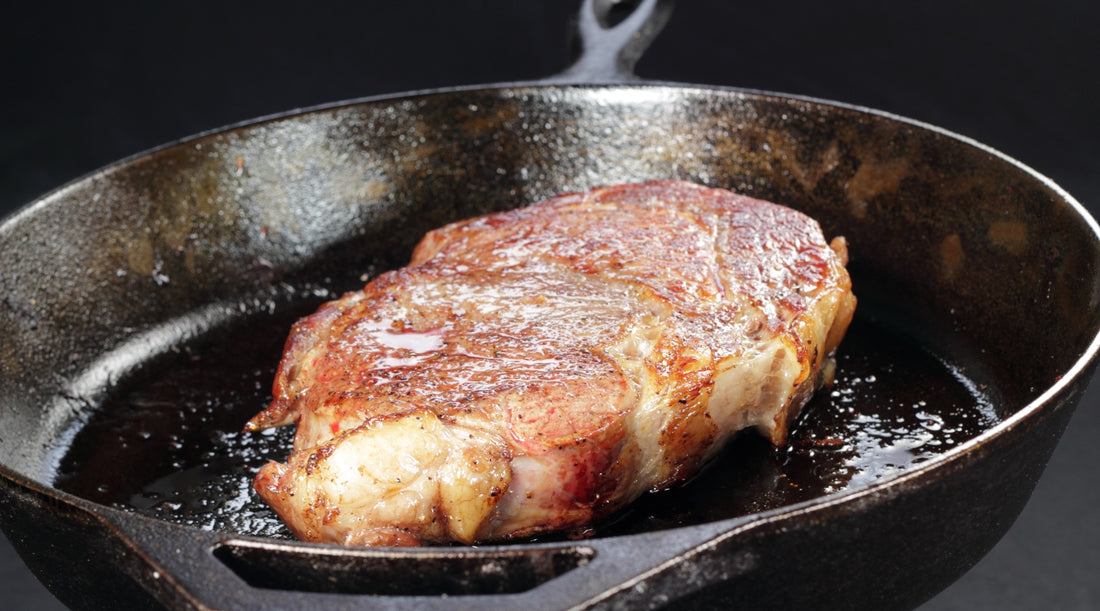
From Frying to Finishing: Mastering Beef Tallow in Every Dish
Share
n the realm of culinary arts, the quest for that perfect ingredient that can elevate a dish from good to unforgettable is never-ending. Enter beef tallow, a traditional fat that's making a triumphant return to modern kitchens. From the initial sizzle of frying to the final flourish of finishing, let's explore how mastering beef tallow can transform every dish it graces.
The Revival of a Culinary Classic
Beef tallow, rendered fat from cattle, was once the backbone of many cuisines. Its decline in popularity gave way to lighter oils and fats, but as we cycle back to appreciating whole foods and traditional cooking methods, tallow's rich flavor and versatility are being rediscovered and celebrated.
Frying with Finesse
The journey of beef tallow mastery begins with frying. Its high smoke point (ranging between 400°F to 420°F) means it remains stable at high temperatures, making it ideal for creating that irresistible golden crust without burning. Whether you're crafting the perfect French fries, frying chicken to golden perfection, or even experimenting with doughnuts, tallow adds a depth of flavor that vegetable oils simply can't match.
- Tip: Keep your frying temperature between 350°F and 375°F for the best results—hot enough to crisp the exterior quickly without absorbing excess fat.
Sautéing and Searing
Move over, butter and olive oil; beef tallow brings an unbeatable richness to sautéed and seared dishes. Vegetables take on a caramelized, almost nutty flavor, while meats develop a flavorful crust that seals in juices. The key here is to use a moderate amount of tallow, just enough to coat the bottom of the pan, and let the fat's natural properties do the work.
- Tip: For an unforgettable sear on steaks or chops, pat the meat dry, season well, and place it in a very hot pan greased with a thin layer of beef tallow. The result is a steakhouse-quality crust with a tender, juicy interior.
Baking and Pastries
Yes, beef tallow can even venture into the realm of baking and pastries. Its unique texture makes it a fantastic butter substitute in certain recipes, adding a flakiness to pie crusts and biscuits that's hard to achieve with other fats. While the flavor of tallow is more pronounced, it can complement savory baked goods or add an intriguing twist to sweet treats.
- Tip: When baking with tallow, start with recipes that are naturally more savory, like herb bread or meat pies, to fully appreciate the flavor profile it brings to the table.
The Finishing Touch
Perhaps one of the most overlooked uses of beef tallow is as a finishing touch. A small dollop melted over hot vegetables, steaks, or even soups adds an incredible layer of flavor. Think of it as using a high-quality olive oil for drizzling over dishes before serving—the effect is similar, enriching the dish with a complexity and richness that elevates the overall taste.
- Tip: Experiment with infused tallow by gently warming it with herbs, garlic, or spices, then straining it for a flavored fat that can add a nuanced finish to a wide variety of dishes.
Embracing the Full Spectrum
Mastering beef tallow in the kitchen is about more than just substituting one fat for another; it's about embracing the full spectrum of culinary possibilities it offers. From the moment your ingredients hit the pan to the final taste test, tallow has the potential to enhance every step of the cooking process.
Whether you're deep-frying, sautéing, baking, or just looking for that perfect finishing touch, beef tallow offers a versatility that's unmatched by more modern fats. So, the next time you're looking to elevate your culinary creations, remember: mastering the art of cooking with beef tallow could be the secret ingredient you've been searching for.


